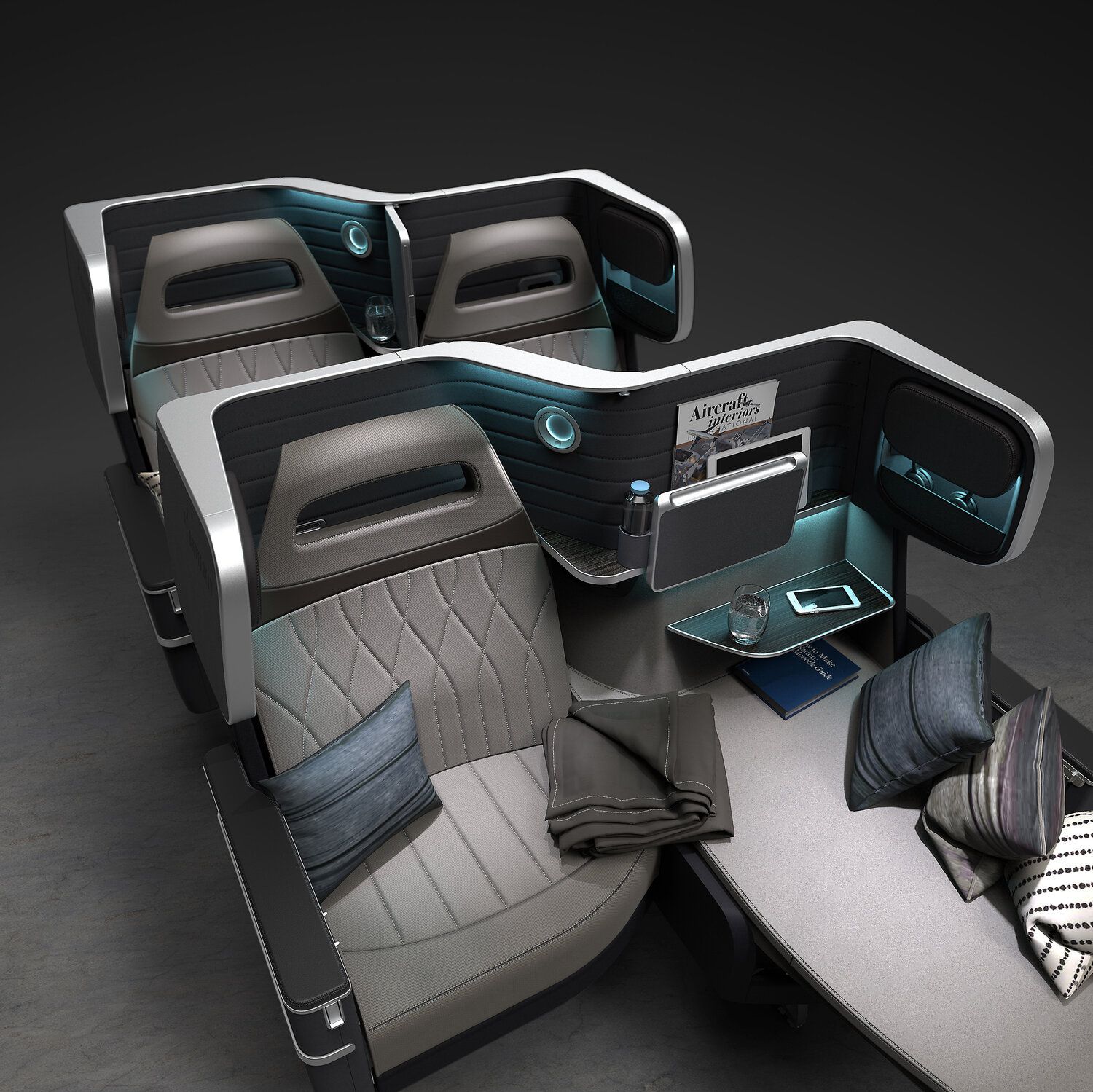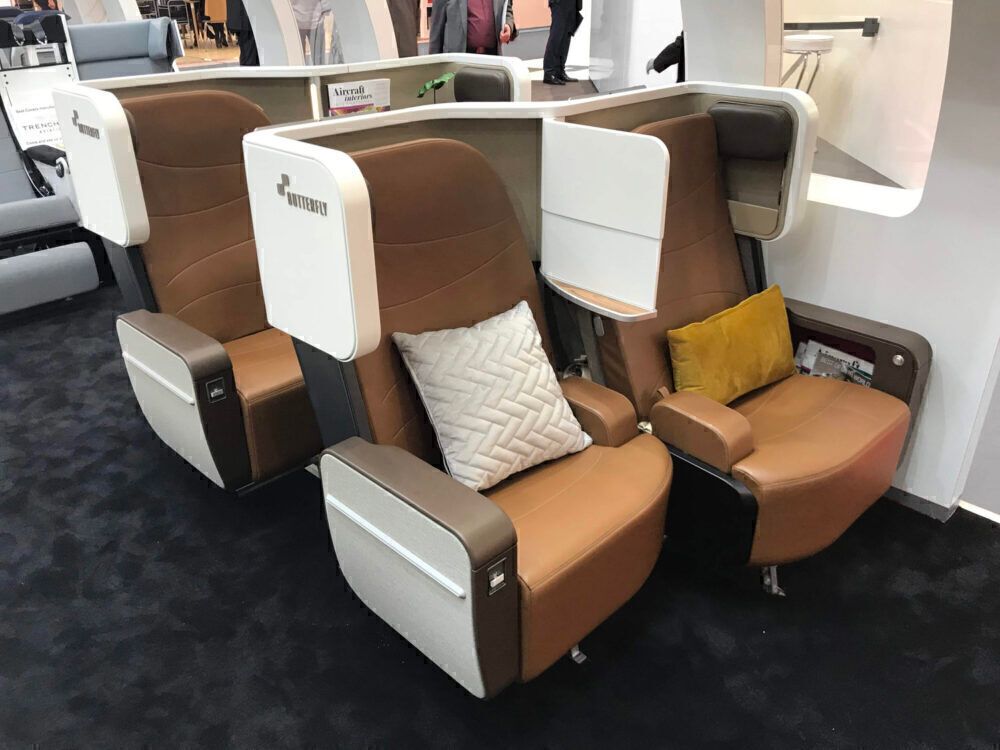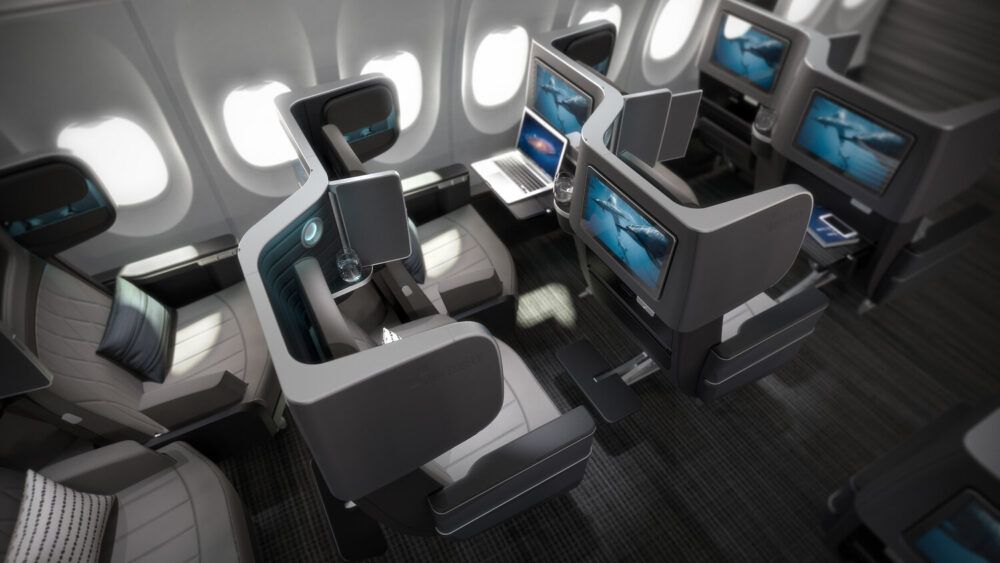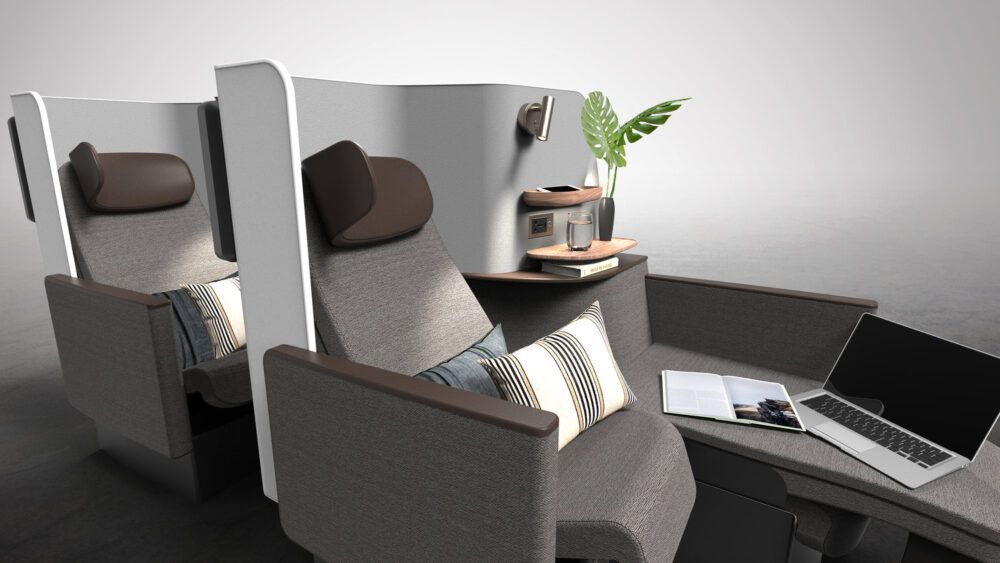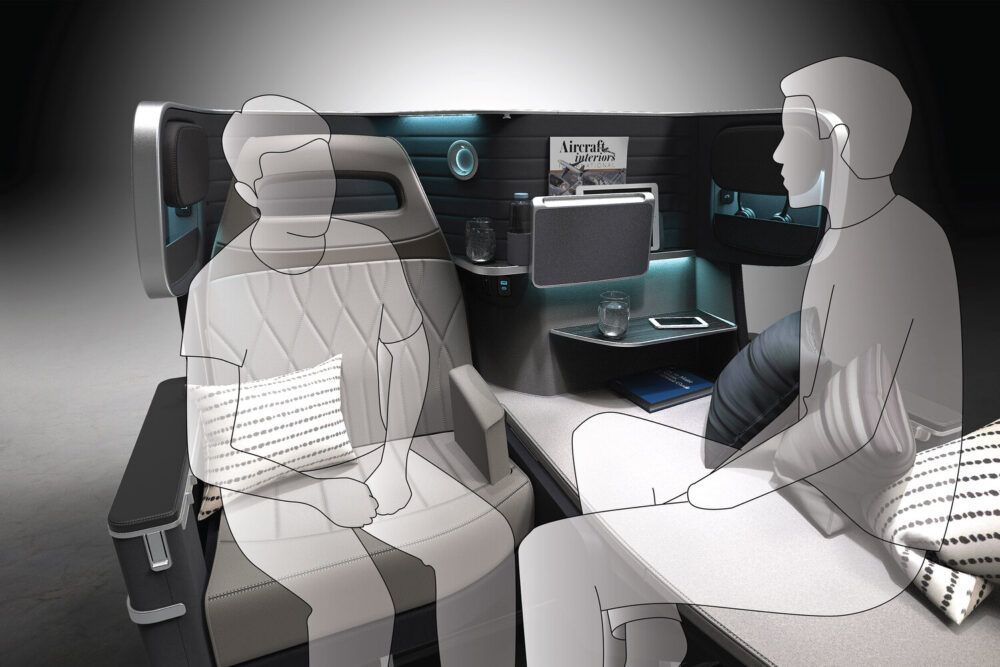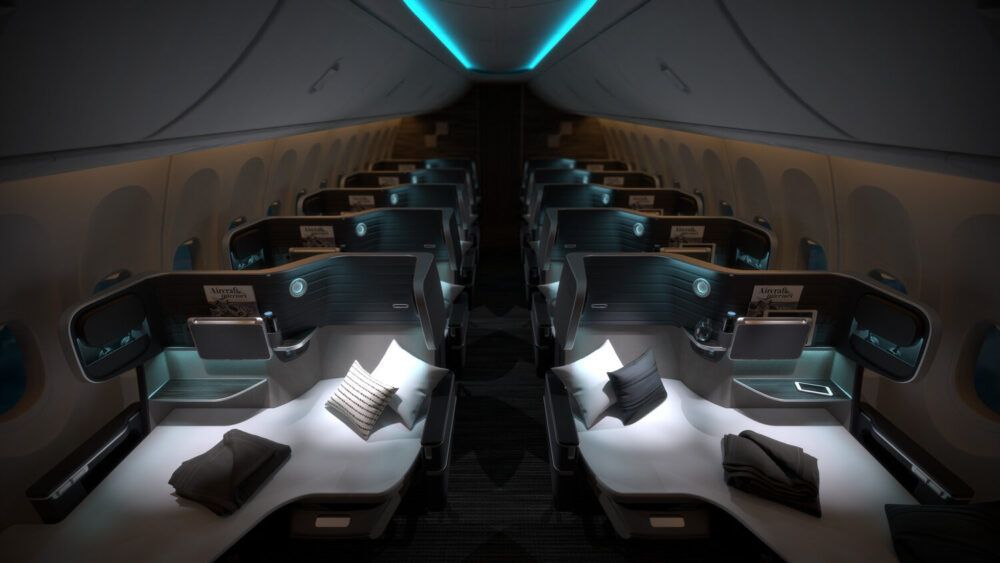The Butterfly seat is perhaps the most flexible cabin concept out there. In just minutes, the product can be switched from a premium economy seat for two into a spacious business class suite. It’s a gamechanger for sure, and with a design that is suited well to the narrowbody market, it could be the comfort we need in the future.
Long-haul narrowbody comfort
With the trend of operating long-haul flights using narrowbody aircraft set to continue for the foreseeable, plenty of cabin designers have been working to come up with unique offerings for the passengers on these flights. JetBlue’s transatlantic A321LR features a modified Thompson Aero SOLO seat, while Stelia Aerospace offers a similar but different approach to premium cabin comfort.
The problem here is that all these super comfortable-looking products are aimed at business class travelers. Not all routes will necessarily support a large business class cabin, so plumping for a permanent capacity level could end up limiting the flexibility of these narrowbody planes.
Hong Kong-based Paperclip Design has a great solution to this problem. Its Butterfly seat allows airlines to switch between a spacious, lie flat business class product and a comfortable, staggered premium economy product without any physical changes being made. Let’s take a look at how it works.
Stay informed: Sign up for our daily and weekly aviation news digests.
Premium economy comfort
Each Butterfly seat is arranged in a block of two seats, with a staggered arrangement. With both seats upright, it’s a comfortable product for premium economy or even a short-haul business cabin. Passengers will enjoy the extra personal space afforded by the staggered arrangement, ending armrest wars for good.
In a narrowbody configuration, each seat is afforded a pitch of 37 inches with a width of 22 inches. The Butterfly has also been configured for widebody applications, which allows more pitch but a slightly tighter seat width.
Thanks to the transformative nature of the suite, those traveling with kids have the option to activate the ‘couch’ on one side of the seat pair. This gives enough space for a small person to lie down flat and enjoy some nap time, giving everyone a bit of peace and quiet.
Transforming into business class
Like a butterfly emerging from its chrysalis, the seat’s beauty really shines through when it's converted into business class. The business class setup sees the forwardmost seat of the pair folded down and away, forming a couch-type arrangement for suite-style space. This can be used for storage, or fliers can invite a guest over for dinner and a chat.
When it comes to time for sleep, the aisle seat is folded over in a similar manner to create an enormous bed. The designers state that it gives one of the largest and flattest sleeping surfaces in the industry, with some 36 inches of width at the hip, and plenty of room to get comfy. The bed area is 81 inches at its longest, enough for a six foot nine giant to stretch out.
Because the suite can be rearranged in an instant with minimal fuss, it allows more flexibility for the passenger too. A couple flying business, for example, can choose to un-flip the second seat if they wish, allowing them to sit together in a space that will be certified even for taxi, takeoff and landing.
Will this concept become a reality?
Unlike many of the concepts we see for cabin interiors, the Butterfly is pressing ahead in its development process. Last year, Butterfly Flexible Seating Solutions, the commercial arm of Paperclip Design, joined forces with Sekisui Kydex, Tapis, and MGR Foamtex to take the product forward.
The team is currently working on rapid prototyping of the product, ahead of a move to certify the seat. While there’s still much work to be done, we could well see this product on planes in the future.

